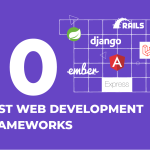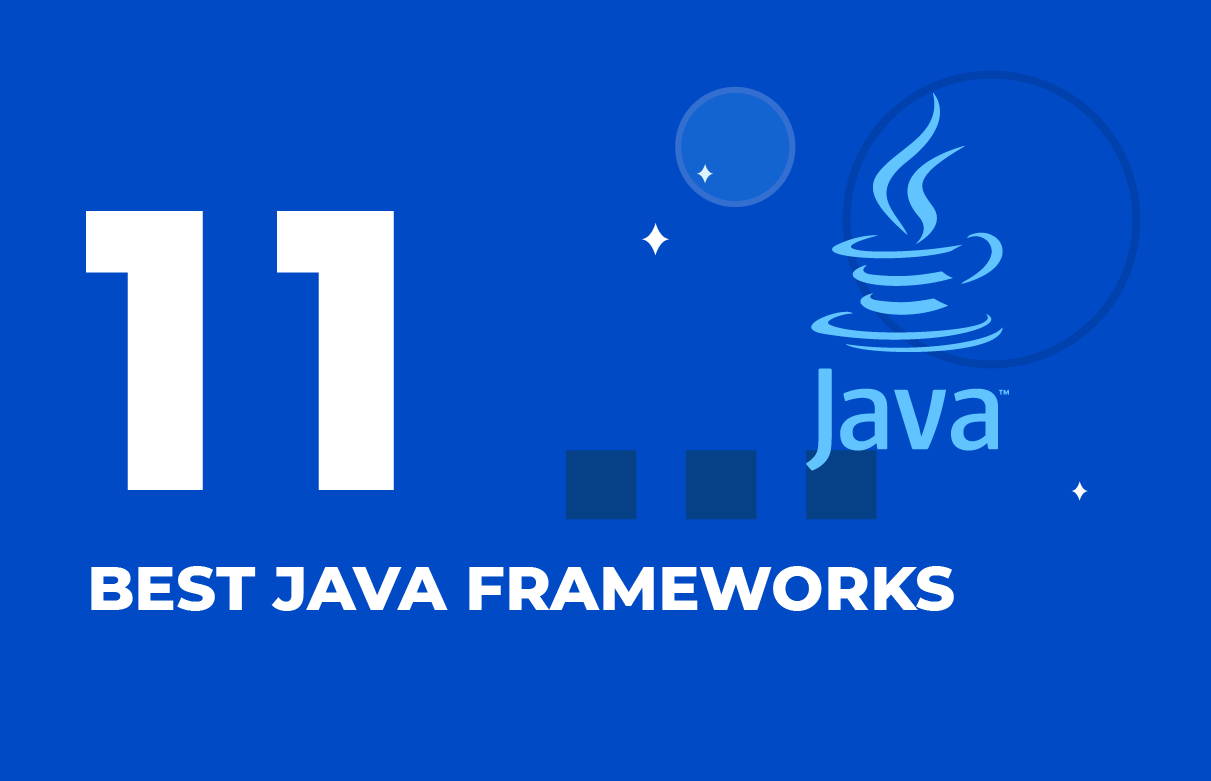According to the US Department of Labor, employment rates of software developers, QA analysts, and testers are projected to increase by 22% through 2030, which drastically exceeds all other professions.
Today, the field of software engineering is bustling with a wide array of programming languages. While some software engineers dedicate their careers to specializing in a single or a few programming languages, others are keen on learning new languages to broaden their expertise and enhance their marketability. So what are the top ten programming languages in 2024? Read on to discover the best options.
10 Most Popular Programming Languages
Python
Python is a programming language that is often preferred for the creation of software programs, web development, automation of management jobs, data analytics, and graphical representation of information. It is comparatively easy to learn, making it popular among non-tech specialists as well (people working in fields such as academia, finance and bookkeeping). With strong capabilities in analytics, it has become essential in the field of data science, particularly for machine learning, statistics, 3-D tools, and complex calculations.
Other areas of application include back-end and full-stack development, data processing, and improvement of cybersecurity features. In addition, Python has gained popularity in automating repetitive tasks and testing.
In IT since 1993, SaM Solutions offers professional custom software development services to clients across all industries.
JavaScript
JavaScript is a popular scripting language used to create scalable desktop and mobile websites with bright UIs, enhanced with dynamics, special effects, interactive functions, and complicated activity. Known for its high-speed development, steep learning curve, and great interoperability features, it continues to be a favorite among developers.
It offers good compatibility with other top programming languages in 2024, fantastic syntactical characteristics, and a great user experience with a high level of interaction. It can be used both for client-side and server-side programming. Software engineers use JavaScript to create high-quality websites, mobile apps, computer games, as well as programs for virtual reality (VR), artificial reality (AI), and machine learning (ML).
Java
Java is a versatile practical programming language that has kept a leading position among other current popular programming languages for several years. It is suitable for a variety of purposes: from building an e-commerce webstore and mobile apps to developing fintech and gaming applications. It is appreciated for its simplicity in writing, compiling, debugging, and learning processes.
Java is comparatively easy to read, as the language shares similarities with the natural language used in everyday life. Other features include the ability to reuse the code, enhanced safety, cost efficiency, and a platform-independent nature.

SQL
SQL is used for communication with databases, particularly for updating, retrieving, manipulating and managing data. It’s widely implemented as an effective tool for backend programming and application development in the music and financial industries, as well as in social networks.
The programming language has attracted a large community of keen admirers, so if you decide to learn SQL, you will surely find plenty of resources. Data scientists use SQL to extract and interpret data received from various sources. Other areas of application include building software applications, conducting business analysis, and carrying out SEO optimization of website content.
C#/C++/C
C#
C# is a popular programming language most suitable for developers with more than intermediate coding skills. As a member of the C family of languages, it is widely used for building desktop and web apps, web services, cloud programs, and computer games. Created by Microsoft, it is frequently implemented in Windows infrastructures.
With C# it is possible to create dynamic websites that are easy to use, scale, and maintain. Its advantages include time efficiency, robust memory backup, and expressive syntactical features, often making it the preferred choice over other options.
C++
C++ is best for performance-oriented apps that are focused on speed and efficient memory storage. It’s used for building GUIs, programs for enterprises, games, robots, artificial intelligence, and scientific research.
Key features of C++ include high scalability, a large user community, and portability, allowing the movement of programs across a variety of platforms. Being a compiled language, it is known for its fast execution. With syntax similar to other C family languages and Java, it’s easier to learn for those already familiar with one of those languages.
C
The C programming language is often considered a basis for programming. Mastering C makes it easier to understand other programming languages. Its applications range from app building, programs, embedded systems, browsers, operating systems to Internet of Things software.
The main advantages of C are its portability across a variety of platforms, cost-effectiveness, easy debugging process, fast compilation, and dynamic memory allocation. In addition, C offers faster app execution in comparison to many other popular languages and offers plenty of advantageous built-in features.
Go
Go is a simple and reliable programming language that’s frequently used for the creation of lightweight microservices, cloud apps, or programs that run on servers. Other uses of Go are in automated site reliability engineering, DevOps, AI and data analytics. It is easy to learn thanks to its minimalistic and transparent features. Other significant benefits include high performance, speed, scalability, and comprehensive programming tools.
TypeScript
As a superset of JavaScript, TypeScript was originally created to identify mistakes at early stages of development to increase the efficacy of JS software programming. The TypeScript programming language has plenty of advantages. It offers robust development instruments for JS IDEs and enhances coding processes, with the ability to prevent problematic errors with code revision.
Another benefit is its readability and understandability, which surpasses many other languages. Furthermore, it is less problematic to refactor and provides easily comprehensible, predictable code. It may be particularly useful when you possess huge codebases or need rapid development.
Achieve digital transformation with custom software delivered by SaM Solutions’ seasoned engineers.
Rust
Rust resolves the difficulties that С++ software engineers have faced for a long time. Thanks to its double-mode nature, it can be used in two ways. In the first case, when developers work in safe mode, there are certain limitations set on the development process, and as a consequence, the code will work properly.
In the second case, while not in safe mode, the engineer is at liberty to use additional options to enhance the work. Nevertheless, this mode requires extra care to prevent vulnerabilities. As a rule, this programming language is utilized to produce OS, elements for browsers, simulations, games and VR.
Swift
Swift is a robust programming language that lets developers efficiently create applications for Apple products. Software developers favor this language thanks to its concise grammar, expressive syntax, and overall succinctness. With the capacity for full stack development, Swift remains among the most popular development languages, supported by a large community of adherents. Furthermore, it is well-known for its safety and, as its name suggests, its speed.
As a performance-oriented language, Swift focuses on simplicity and safety. Because it safeguards configurations, it protects code from possible inaccuracies. Moreover, its functionality is greatly extendable, providing scalability to projects.
PHP
PHP is an open-source multi-purpose utilitarian language used to create web apps. With rich, extendable features and a supportive user community, it has established itself as a top pick for both novice and seasoned programmers. Thanks to high resourcefulness, its code can be readjusted with no additional costs.
Being a cost-efficient language that is easy to learn, optimize and integrate, PHP remains among the most preferred back-end languages. Its logical and consistent syntactical structure facilitates ease of use. Other essential characteristics of PHP include high performance, extreme flexibility and feasibility, as well as compliance with various OS types.
Other Programming Languages of Note
Perl
Known for its flexibility, constant improvement in its proficiency in processing word-oriented materials, and efficient problem-solving, this programming language is extensively used both for business and personal purposes. Initially, it was brought into existence with the aim to scan, extract and print text-based data, along with handling other administrative chores. Today, it is used for textual data redesign, completion of organizational tasks, analytics, and batch processing.
Perl is quite remarkable in that it uses familiar terminology from everyday speech. Moreover, being open-source, it’s free to use. Interestingly, with its large, passionate community, it has inspired multiple engineering championships. Perl is so well-loved that poems have been written in it!
R
In most cases, the R programming language is used for statistics and consequent graphical representation of data that you can view, inspect, and base critical decisions on. It has easily accessible code due to its open-source nature, so it allows for quick and transparent bug fixes and anyone can introduce changes to the code.
You don’t need any third-party library to convey data analysis — it is built into the programming language. One of the most prominent characteristics of R is that it’s focused primarily on working with data, so it’s widely implemented in academia and scientific research. In addition, it can also be implemented in fintech, commerce, and business.
Bash
Born out of necessity as a replacement for the Bourne Shell, Bash (Bourne Again Shell) emerged through Brian Fox’s development efforts for the GNU Project. Its significance lies not just in its command interpretation capabilities but also in its provision for imperative programming elements like conditional constructs, loops, and functions.
This amalgamation of features renders Bash a potent instrument within the Linux ecosystem, catering to a multitude of tasks ranging from data crunching and automated backups to system administration and web development.
Objective-C
Objective-C, a superset of the C programming language, gained prominence as the primary language for macOS and iOS development. Objective-C excels at building robust, feature-rich apps with a strong focus on user experience, ranging from mobile apps to desktop applications.
Objective-C’s object-oriented and dynamic nature enables the creation of modular, reusable code with runtime flexibility, simplifying the addition of new functionality without extensive recompilation. Its compatibility with C and low-level features empowers developers to seamlessly integrate existing code and craft high-performance apps.
MATLAB
The MATLAB programming language incorporates rich capabilities to compute, visualize, and program in a user-friendly math-oriented environment. It offers an abundant library for statistical and algebraic math, calculations, and analytics, and is enriched with built-in graphical possibilities for data display and instruments for creating customized plots.
It is widely used to create models, simulations, and prototypes, and develop algorithms, as well as in data visualization, investigation and research, developing apps and GUIs. Other areas of MATLAB implementation include industrial commercial usage, the academic field, artificial intelligence, testing, finances, and biosciences.
Ruby
Ruby is a versatile multipurpose language with an easy-to-use syntactical structure, allowing users to concentrate on solutions rather than writing lengthy code. It can be used both for front-end and back-end software engineering, and it opens up rich opportunities for creating desktop systems, web apps, data processing software, and automation instruments.
Ruby also supports static site generation and rapid application testing and deployment, making it a valuable tool for companies needing to move quickly.
Why Choose SaM Solutions for Software Development?
Choose SaM Solutions for your software development needs — we boast over 30 years of extensive experience, specializing in IT consulting and custom software engineering services. Our expertise spans various industries, including retail, telecom, automotive, and high-tech, enabling us to deliver reliable and secure IT solutions that align with our clients’ business objectives.
We prioritize the continuous education and training for our employees, creating expert global teams tailored to meet the specific needs of each project. By staying ahead of the dynamic IT landscape, exploring new technologies, and partnering with leading service providers, we share our cutting-edge expertise with our clients.
Conclusion
As this article has demonstrated, each programming language excels in specific domains, offering unique opportunities for developers in terms of technical functionality and usability features.
To choose the best language for your needs, compare the characteristics and features of the 10 most popular languages. Many businesses are keen to have employees with multiple technical skill sets, so when deciding what language to learn next, rely both on your personal preferences and the current demands of the industry.



























 5 Reasons Why Your Business Needs a Mobile eCommerce Application
5 Reasons Why Your Business Needs a Mobile eCommerce Application Using Salesforce to Improve Your Sales Pipeline: Five Tips
Using Salesforce to Improve Your Sales Pipeline: Five Tips Cross-Platform Mobile Development: Five Best Frameworks
Cross-Platform Mobile Development: Five Best Frameworks How to Develop Custom Accounting Software
How to Develop Custom Accounting Software 10 Best Web Development Frameworks in 2024
10 Best Web Development Frameworks in 2024







![[Tech Talk] What Developers Should Know About SQL Optimization, Part 1: Fundamentals](https://www.sam-solutions.com/blog/wp-content/uploads/fly-images/30279/SQL-video-cover-370x238.webp)




 Top 30 Ecommerce Tools to Elevate Your Business in 2024
Top 30 Ecommerce Tools to Elevate Your Business in 2024 5 Best Tools to Improve Embedded Software Testing
5 Best Tools to Improve Embedded Software Testing Why React and Node.js Are the Top Technologies for Creating High-Performance Web Apps in 2024
Why React and Node.js Are the Top Technologies for Creating High-Performance Web Apps in 2024 10 Best IoT Platforms for 2024
10 Best IoT Platforms for 2024
My favorite programming language is Python and PHP. my point of view This time most popular programming language is Python.
I was truly glad to read that Perl and Swift are on a roll! I haven’t used them in a while, but I am now considering going back to them. Besides, I am eager to study a couple of new languages for more job opportunities.
Thank you for sharing this comprehensive information! Now I’m well-prepared for the upcoming year. I am thinking about taking up some software development courses.
I don’t think you need to know many languages to be a successful developer. When you have mastered a couple and are proficient in them, it will absolutely suffice.
I suppose it’s a good idea to learn as many languages as possible — no one knows what the future of the job market will bring in the coming years for us…
Thanks! So happy to be a JS developer! It was definitely not easy to learn, but now I am a huge fan! I can get the most out of both rich functionalities and plenty of career options.
I would add Dart language as well. It has gained momentum in mobile development for the past years. As someone with a particular interest in mobile development, I would love to read more about Dart.
Thanks for the article! I have decided to learn a couple of new languages. I only know Java, and I feel like I need to know more languages for my current job, so I will take some courses!
Not a word for Perl?
Having learned dozens of languages, Perl remains my number one choice (and favorite) for quickly clearing a need of coding job.
As a general-purpose programming language, it helps resolve 90% or more for my daily work. (Especially for system administration, data processing)
Because it’s well designed to an amazing extent by a great linguist, it’s still the most perfect language for a programmer’s mind – especially the core language part.